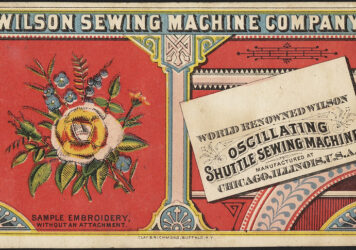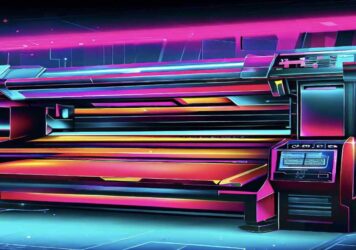Should I Use Vector Graphics or Raster Images for Screen Printing
Angelo2025-06-21T17:01:57-06:00In a screen printing shop somewhere…
The sun was setting behind the mountains as I sat in my dingy office, surrounded by piles of film positives, print rejects, and half-empty coffee cups. My mind was racing as I contemplated the age-old question: should I use raster images or vector graphics for screen printing?
I had seen it all, from the dazzlingly detailed raster images to the crisp lines and curves of vector graphics. But which was better? The answer was eluding me like a greased pig at a county fair.
I reached for my trusty typewriter (ok, keyboard) and started pounding away, the keys clacking loudly in the quiet room. The words flowed like rum on a sun-soaked Caribbean beach, and before I knew it, I had an answer…sort of.
Raster Images
Raster images, with their endless colors and stunning detail, were once the go-to choice for screen printers. But as technology evolved and vector graphics became more widely available, the lines began to blur.
Vector Graphics
Vector graphics, with their clean lines and easily scalable shapes, have a lot going for them. They’re perfect for logos and other designs that need to be resized without losing quality. But when it comes to screen printing photo-realistic, half-tone, and gradient work, raster images still reign supreme.
Why, you ask? It’s simple, my friend. Raster images use pixels to create the image, which means they can reproduce subtle gradients and variations in color that vectors just can’t touch. This makes them ideal for printing complex designs like photographs or illustrations with intricate shading.
But don’t take my word for it. The proof is in the Pina Colada, or in this case, the t-shirt. Take a look at any high-quality screen printed shirt, and you’ll likely find that the design was created as a raster image.
Buy the ticket, take the ride…
Of course, there are always exceptions to the rule. If you’re printing a simple design with solid colors and crisp lines, a vector image will do just fine. But if you want to capture the full depth and richness of an image, raster is the way to go.
As the last rays of light faded from the sky, I sat back in my chair and took the last swig from my cold, day old coffee. The answer had been there all along, hiding in plain sight like a diamond in a coal mine. It wasn’t the answer I had expected, but then again, nothing ever is.
In the world of screen printing, as in life, the lines between right and wrong are often subjective. But one thing’s for sure: if you want to create a complex design with deep gradients or a photo-realistic image that truly pops, raster is the way to go. And as for me, well, I’ve found my answer…both raster and vector should be used for screen printing depending on the source material. And in some cases, both at the same time.
Until next time, my friends.





